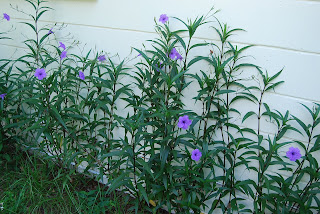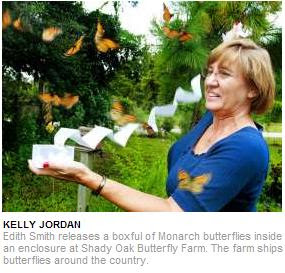Butterfly Release Controversy

What we unwittingly released was a firestorm when we published the butterfly release piece last week. Turns out there is a dark side to the practice, and we want to share with our readers what we have come to know.....and hey, folks, this is one of the reasons the blog exists! It gives us a great forum to talk with, question, and learn from each other! The butterfly world is kind of divided in two camps on this issue. On one side are members of IBBA, the International Butterfly Breeders Association , who say that the practice of releasing butterflies is safe, both for the butterflies themselves, and for their impact on the environment they enter. On the other side are a number of people, including members of the Xerces Societ y , and the North American Butterfly Association (NABA). Xerces is a nonprofit organization that protects wildlife through the conservation of invertebrates and their habitat. The Xerces site is very informative, and one of the things you will note if







